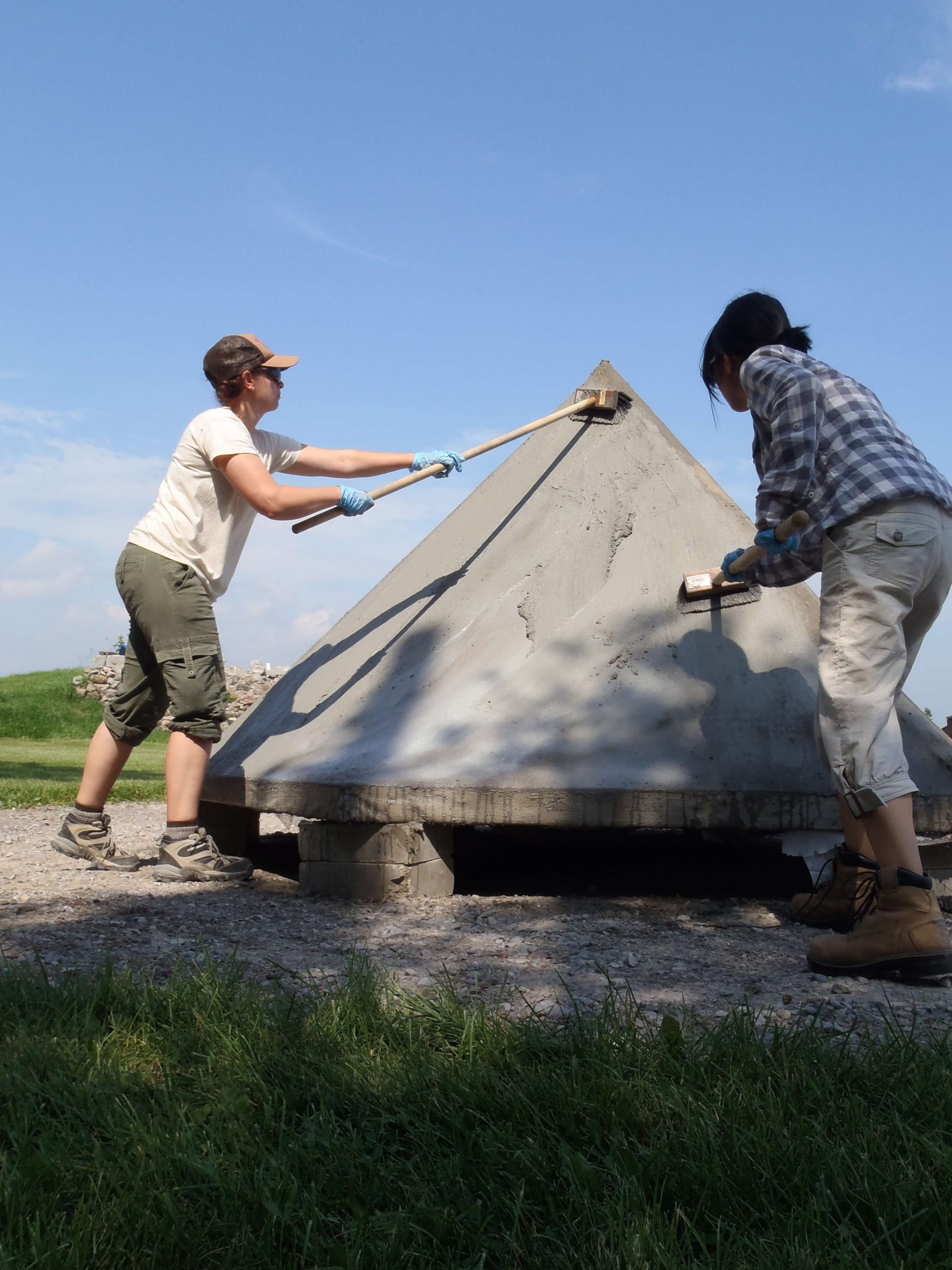On July 3rd, the students at Endeavour’s Sustainable New Construction program took part in a day long workshop focused on building hyper-parabolic or “Hypar” roofs.
This type of roofing is much different than any other form of roof. Rather than using dimensional structural material (such as lumber or metal) to create a structural skeleton and then sheathing that skeleton with a waterproof covering (steel sheets, shingles, etc), a hypar roof uses very little material to create the frame and relies instead upon stretching a fabric over the frame to form a hyper parabola (an arch in two perpendicular directions) and coating that fabric with a thin (3/8-inch) layer of latex-modified cement.
Hosted by Henry Weirsma of Fifth Wind Farm and taught by George Nez of Colorado, the class was able to work on all the steps involved in making a hypar roof. We were joined by Tim Krahn of Building Alternatives, who brought his engineering perspective to the proceedings.
We started by examining a cross-gable frame assembled by Henry. While many geometries are possible with hypar roofs, this one has a form that is very compatible with conventional North American housing and roofing styles, and can be used singularly or can be easily combined to roof rectangular or L-shaped buildings. It affords generous gables on all four sides, making the roof space easily habitable.
By stretching fabric and/or mesh across the frame, the hyper parabolic shape is automatically created. This confluence of two arches results in an extremely strong geometry. Many different fabrics and/or meshes can be used. We experimented with fiberglass stucco mesh, polyester bed sheets and landscaping fabric. The fabric/mesh is stretched tightly and stapled along the frame. This material gives the roof its tensile strength.
The compressive strength of the roof comes from pouring a latex-modified cement over the mesh. The latex allows the cement to have a lot of tensile strength, while the cement/sand portion provides the compressive strength. Several layers of this mixture are added to the roof until a layer of 3/8-inch is achieved.
While latex and cement are not highly sustainable materials, the fact that they can be used sparingly to create roofs of high strength (tested to upwards of 50-150 pounds per square foot) and light weight (4 pounds per square foot) while reducing the amount of lumber and other high-cost, high-weight materials make them an exciting option.
George has built hypar roofs all over the world, and showed us photos of examples from Africa, Asia and the USA. He is a passionate advocate for this kind of roof, and he inspired a lively and discussion-filled day.
Hopefully, it won’t be long before Endeavour has a chance to build a full-scale hypar roof on one of our projects!







